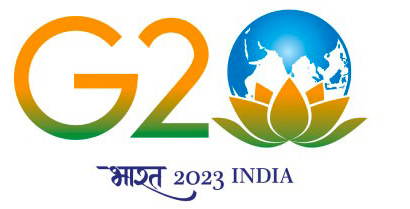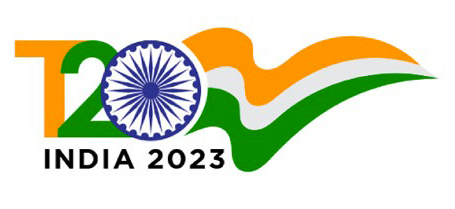Introduction
In November 2022, on the eve of India’s assumption of the G20 presidency, Prime Minister Narendra Modi announced that the principle of ‘data for development’ (D4D) would be integral to India’s tenure.[1] His statement was echoed by the G20 Bali Leaders’ Declaration, in which heads of state unanimously “reaffirm[ed] the role of data for development” in promoting “economic growth and social well-being”.[2]
The importance of D4D, and more broadly of fostering a data-driven culture, has since been foregrounded repeatedly by leading state representatives—by India’s G20 Sherpa, who has spoken forcefully of how data-led governance helped transform the country’s aspirational districts; and also by a host of Indian business and civil society leaders.[3] While the use of D4D is not a novel approach per se, stakeholders have been quick to grasp that new technologies allow data to be gathered, processed, and applied in ways that were not possible earlier. It was fitting, therefore, that the very first side event of the G20’s Development Working Group under the Indian presidency sought to explore how a tech-based D4D orientation might advance efforts to achieve the 2030 Agenda. Clearly, a new wave of interest in the power of data has been unleashed, and a new moment is at hand.
The zeitgeist has been several years in the making. Since the Japanese G20 presidency of 2019, there has been a growing recognition that data must be harnessed creatively to improve public service delivery. Subsequent presidencies have all asserted that the smart use of the growing wealth of data produced by digitalisation could greatly strengthen decision-making and policy outcomes. A corollary of this—also consistently emphasised by G20 nations—has been the need to boost technologies for data collection and analysis. In this regard, artificial intelligence (AI), big data analytics, the Internet of Things, and other emerging technologies continue to push the frontiers of the possible.
India’s status as a global digital powerhouse makes it an important voice in the evolving discourse on D4D. Indeed, data-driven applications are intrinsic to the Digital India programme, which is building a “digitally empowered society and knowledge economy”, and recalibrating “governance and services on demand”.[4]
The 2022–23 period—the run-up to India’s G20 presidency—witnessed the launch of several potentially game-changing data initiatives. In May 2022, for instance, the NITI Aayog unveiled the National Data and Analytics Platform (NDAP) and opened it to the public in order to improve access to and the use of government data.[5] The NDAP is a user-friendly web platform that aggregates and hosts datasets from across India’s vast statistical infrastructure. It is democratising data delivery by making government datasets readily accessible, implementing rigorous data-sharing standards, enabling interoperability across the Indian data landscape, and providing users with helpful tools for analysis and presentation.[6]
In the same month, the Indian government published a draft National Data Governance Framework Policy (NDGFP) that aims to ensure that non-personal and anonymised data from government and private entities can be made available to the country’s innovation ecosystem.[7] Once the NDGFP is finalised, the government intends to share anonymised datasets collected and harmonised under the framework with India’s research, startup and AI communities.[8] The database could be used by companies to train their AI models, and it is expected that access to this rich and varied corpus of data will spur innovation, have far-reaching impacts on development projects at all levels, and usher in a new era of digital governance.
Undoubtedly, one of India’s most eagerly anticipated data-related developments of 2022 was the introduction of the Digital Personal Data Protection Bill in November. Recognising the importance of data for the development of the digital economy, the new Bill strikes a sensitive balance between the rights of individuals and the interests of businesses, which may lawfully use the personal data of individuals. While the Bill does not foreclose the use of personal data, it stipulates that data can be processed only after organisations have sought consent from individuals, or in cases where such consent can be assumed. Several other clauses extend substantial rights to individuals and offer them more decisional autonomy and control over their data than ever before.[9]
India’s advancements in the domain of data use and its commitment to D4D are being lauded on the world stage. The 2022 BRICS Forum on Big Data for Sustainable Development saw five world powers agree to enhance collaboration around big data as a tool for sustainable development, and Indian voices were instrumental in helping the Forum agree that increased data-centric cooperation among nations is imperative.[10] The country’s prowess at deploying drones for development-focused data generation has led the World Economic Forum to estimate that drones and the data economy they are establishing could boost India’s GDP by US$100 billion and create nearly half a million jobs in coming years.[11] And the United Nations has recognised India’s data-based SDG India Index and Dashboard as a “crucial tool in India’s SDG monitoring efforts” and an “advocacy tool to propagate the messages of sustainability, resilience and partnerships”.[12]
Finally, India is rapidly emerging as a leader in the use of geospatial technologies, or the tech-led acquisition of data referenced to the Earth and its use for analysis, modelling, and visualisation. Addressing the UN World Geospatial Information Congress in October 2022, Prime Minister Modi declared that “geospatial technology has been driving inclusion and progress” and went on to outline how it had become a key enabler of development.[13] A month later, India put in place its far-sighted National Geospatial Policy, with a set of ambitious milestones to be met by 2035.[14]
The tactical use of “micro data” or sub-state-level data—whether related to individuals, households, villages, cities, or districts—lies at the heart of bottom-up development approaches. This gives philanthropic institutions and civil society organisations (CSOs) a natural role as a bridge between communities and local governance initiatives on the one hand, and the government’s macro vision and steps to promote D4D on the other. Indeed, with their on-ground presence, entrenched relationships with community-level stakeholders, nuanced understanding of local contexts, and management heft, CSOs are uniquely placed to execute D4D projects in partnership with administrative bodies, or to achieve outcomes that support the latter’s work.
What often makes CSOs’ D4D interventions extraordinary and extraordinarily challenging is the velocity of technological change they have contend with. As Klaus Schwab points out in The Fourth Industrial Revolution, “Contrary to the previous industrial revolutions, this one is evolving at an exponential rather than linear pace. This is the result of the […] fact that technology begets newer and ever more capable technology.”[15] Schwab goes on to observe that the speed and scope of change apart, “the fourth industrial revolution is unique because of the growing harmonization and integration of so many different disciplines and discoveries.”[16] This then, is the milieu in which CSOs—and every other development actor—must strive to make a difference.
Micro Matters explores eight interventions by CSOs in India that are advancing the country’s D4D agenda by gathering data; processing it to evolve insights; translating insights into actions; and making a social impact. Their modus operandi reflect many of the priorities articulated by the government, and are examples of the D4D ethos that India is keen to promote as president of the G20.
As the eight case studies in this volume traverse the expanse of India, eight lessons emerge:
1. Amalgamate tech-based data collection with the use of legacy datasets and knowledge
To offer actionable insights, the data being collected needs to be focused but wide-ranging, offering a multifaceted perspective of the issue under consideration. While tech-based methods are often used to gather data, a second layer of data generation—drawing on secondary sources, legacy datasets, and even focus group discussions or stakeholder interviews—is crucial. Digital Green’s Kisan Diary Enterprises (KDE) mobile application, for example, is used to collect primary details about members of farmer producer organisations (FPOs) and the crops they cultivate. But it is only when this information is collated against a large body of data about FPO profiles, harvest patterns, cultivation practices and market trends gleaned from state agriculture departments, livelihood missions and frontline workers, that KDE’s strategies for boosting FPO productivity can effectively be implemented at scale.
2. Communicate real-time data and trends to decision-makers through dashboards
Even as data-based insights shape the field-level execution of projects, real-time data analytics, when made available to decision-makers, enable policy decisions and course correction. Dashboards and other e-platforms are increasingly being used to track and display data, identify trends, and decode volatility with impressive results. For instance, under the Alliance for Saving Mothers and Newborns (ASMAN) project in Rajasthan and Madhya Pradesh, officials are using a dashboard to monitor performance indicators related to maternal and neonatal care at health centres. This helps them take swift remedial action when needed, and is improving the quality of care for mothers and newborns. Going forward, the construction of dashboards ought to become a core element of D4D projects, given their impact on transparency, accountability, and efficiency.
3. Optimise the use of emerging technologies
Emerging and disruptive technologies hold great promise for national development, and geospatial technologies and AI are chief among them. The country instituted its National Geospatial Policy in December 2022; the draft National Strategy for Artificial Intelligence explores the application of AI to healthcare, education, agriculture, smart cities, and transportation;[17] and the Union Budget 2023 included a special focus on how to “make AI work for India”.[18] A new generation of Indian D4D initiatives is beginning to leverage emerging tech with powerful outcomes. As part of its disaster preparedness work in Assam’s flood-prone Cachar district, Reliance Foundation has geo-tagged the district’s critical infrastructure and public facilities where community members can be sheltered or evacuated during natural disasters. And Wadhwani AI’s app for cotton farmers, CottonAce, uses AI to analyse images of cotton pests and other details uploaded by the farmers and generates instant agricultural advisories for them.
4. Incorporate ancillary services into the design of D4D interventions
D4D programmes afford opportunities to strengthen ecosystems by rolling out targeted ancillary services. These services, such as the systematic sensitisation and capacity-building of stakeholders, should be built into the very design of the intervention. For instance, Anudip Foundation’s data-led efforts to empower women digitally became an occasion for the organisation to sensitise its partners and field workers about data hygiene and cyber fraud. The Mindspark edtech platform enhances learning outcomes for schoolchildren using data, but its creators also run associated teacher training programmes and cybersecurity awareness campaigns for parents. Similarly, the e-training tools built into the ASMAN app have encouraged self-paced learning among healthcare providers, boosting their confidence and allowing them more time for patient care.
5. Build trust by ensuring data confidentiality and security
The credibility and success of D4D projects will hinge on how well they maintain data confidentiality and security, and ensure an individual’s fundamental right to privacy.[19] Several organisations interviewed for Micro Matters observed that there is a strong perception that the government is the most dependable custodian of data. As a result, arrangements whereby data is stored by government entities tend to generate a higher degree of confidence among citizens. This makes it doubly necessary for non-governmental institutions to ensure that any data in their possession remains secure.
This volume showcases several approaches to data protection. For example, Digital Green’s KDE initiative follows the principle of informed consent, and it is only when farmers’ express consent is received that their data is uploaded to the KDE app and further security measures applied. In Cachar, the local District Disaster Management Authority (DDMA) retains all personal survey data and has expressed its intention to share only anonymised data with trusted partners. And Wadhwani AI tries to minimise the amount of personal information required by its CottonAce app, and pushes for data compliance through stringent non-disclosure agreements with partners.
6. Visualise scalability and replicability from conception
Tech-enabled D4D projects have an inherent capability to be scaled and reproduced. It is prudent, therefore, to visualise outcomes at scale from the outset. Several cases bear this out. PATH’s public-private agency programme began as a data-centric initiative to diagnose and treat tuberculosis (TB) patients in Mumbai. Its digital approach allowed the government to scale its model nationwide. Today, PATH’s learnings from the local and national levels are helping it strengthen the pan-India TB response, refine a private sector engagement model that can be applied across health challenges, and operate a pilot with the National Health Agency to bring private healthcare providers on board the country’s Digital Health Mission. In a similar manner, the innate scalability and inspiring results of the Mindspark programme that began in Lucknow have prompted the NITI Aayog to replicate it in other parts of Uttar Pradesh.
7. Offer alternate solutions where connectivity and access are a challenge
Poor internet connectivity and the lack of access to affordable devices continue to plague D4D programmes in parts of the country, particularly in rural heartlands. In these environments, alternate solutions must be provided so that no one is left behind. Anudip Foundation used a variety of formats to collect data, and where connectivity was a challenge, they switched to manual forms. Sporadic connectivity and the challenge of reading off screens led the Mindspark team to create mobile audio clips and SMS-based questions which students could respond to by typing out answers. And the ASMAN project gave healthcare providers SIM cards to ensure uninterrupted access, and created an offline version of its app so that data entry could continue unhindered.
8. Work collaboratively and adopt a multi-stakeholder approach
D4D projects are almost always intensely collaborative, and partnerships must be built at various levels and across diverse stakeholder groups. A direct correspondence exists between multistakeholderism, scale, and success. Reliance Foundation’s disaster management initiative in Assam, for instance, involves sustained cooperation with the Cachar DDMA, other CSOs, Community Resource and Facilitation Centres, and the Inter-Agency Group (a heterogeneous group of stakeholders that undertakes humanitarian activities in the region). For PATH’s TB programme too, the journey from city to state to nation has been marked by an array of partnerships with governments, the private sector and civil society.
The practices that this volume describes are all replicable in other settings. The methods used by a specific organisation and the lessons learned from its work could be adapted elsewhere, especially in countries of the Global South.
Beginning to catalogue case studies of D4D during India’s term as G20 president assumes particular significance because for the first time in the group’s history, its presidency will be held by four developing nations in succession—Indonesia, India, Brazil, and South Africa. With India already being hailed by many as the voice of the Global South, both within the G20 and beyond, there could not be a more consequential time to start mainstreaming the D4D approach into the international development agenda. Micro Matters could serve as a step in this direction, and guide policymakers and practitioners alike.
For Reliance Foundation and Observer Research Foundation, this book is the third in a series about transformations in development and governance. The first two focused on narratives of women-led change at the community level. The present volume marks a shift by exploring the interventions of organisations rather than individuals. The publishers will continue to promote research into progressive models of engagement and action, and build platforms that celebrate personal and institutional leadership. These stories of innovation and triumph must be brought to the widest possible audience, and the publishers remain committed to doing so.
– Jayashree B, Anirban Sarma, Vanita Sharma, and Shoba Suri
Read the full report here.
[1] “’Data for development’ will be integral part of overall theme of India’s G20 Presidency: PM Modi’, Outlook, November 16, 2022.
[2] The White House, “G20 Bali Leaders’ Declaration”, November 15-16, 2022.
[3] Samir Saran and Anirban Sarma, “India will prioritise data for development at G20”, The Hindustan Times, December 14, 2022.
[4] Common Service Centres Scheme, “Digital India”, Ministry of Electronics and IT, Government of India.
[5] Government of India, “NITI Aayog launches the National Data and Analytics Platform”, May 13, 2022.
[6] National Data and Analytics Platform.
[7] Government of India, “National Data Governance Framework Policy”, July 27, 2022.
[8] “Will collect ‘uniform and harmonised’ anonymised datasets: Rajeev Chandrasekhar”, The Indian Express, December 14, 2022.
[9] Charanya Lakshmikumaran, “Digital Personal Data Protection Bill: What rights does it give individuals?’, The Economic Times, January 13, 2023.
[10] BRICS Forum on Big Data for Sustainable Development.
[11] World Economic Forum, “Drones to create $100bn GDP boost and millions of jobs in India, says new World Economic Forum report”, October 18, 2022.
[12] United Nations, “SDG India Index and Dashboard 2020-21”.
[13] Prime Minister’s Office, “PM addresses United Nations World Geospatial International Congress”, October 11, 2022,
[14] Priyali Prakash, “All about the National Geospatial Policy 2022”, The Hindu, January 10, 2023,
[15] Klaus Schwab, The Fourth Industrial Revolution (Geneva: World Economic Forum, 2016), p.8.
[16] The Fourth Industrial Revolution, p.15.
[17] NITI Aayog, National Strategy for Artificial Intelligence, June 2018.
[18] Danny D’Cruze, “’Make AI work for India: Union Budget 2023 introduces big plans for artificial intelligence”, Business Today, February 01, 2023.
[19] Supreme Court Observer, “Fundamental Right to Privacy”.





